There’s a track winding back to Stung Treng, Cambodia
Simon Costanzo ·This blog is part of the Basin Report Card Initiative: a partnership between the World Wildlife Fund (WWF) and the University of Maryland Center for Environmental Science (UMCES)
In October 2015, I made the great journey back to Cambodia for my second time that year. I love the trip there as you get to fly right over the North Pole and see icebergs! I think I mentioned that already in my previous blog about Cambodia. Anyways, this was a follow-up trip for the Luc Hoffmann Institute’s LIVES’s program (Linked Indicators for Vital Ecosystem Services). The purpose of this trip was to train a group of enthusiastic Ministry of Environment (MoE) staff on how to prepare for and run a workshop for local government authorities that reside along the Mekong River in the north of the country. This region is particularly concerned about the effects that multiple proposed dams on the Mekong River will have on the environment, livelihoods and food security in the region. A great article describing the problem and it’s knock on-effects can be found in this recent New York Times article.
Not restricted to Phnom Penh this time, I was looking forward to getting out-of-town and seeing the countryside. Little did I realize that I would be seeing so much of the countryside with a nine-hour bus trip north from Phnom Penh to Stung Treng (pop. ~30,000) way up near the border where the Mekong crosses from Laos into Cambodia. It was only then did I realize how much Cambodia relies on the Mekong River and it’s road infrastructure to connect the country, as I was informed there are only three commercial airports and only 650 km of rail in the whole of the country. Hence the long bus trip.
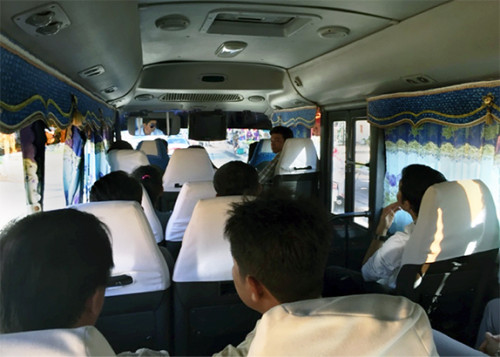
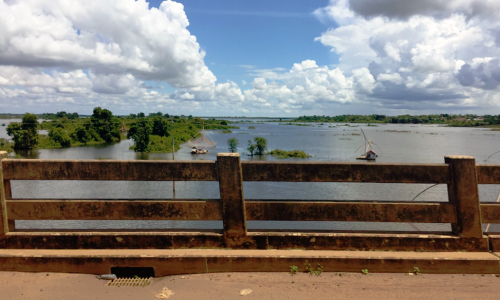
Travelling on the bus, I was accompanied by Dr. Andrea Bassi, an expert in system dynamics modelling, and Kimchhin Sok who specializes in agro-socio economics based in Montpellier, France.… and 15 or so staff from the Ministry of Environment and WWF Cambodia. Along the way we stopped for lunch and had the choice of fried tarantulas, grasshoppers, or larvae of some kind. Having quite the phobia of the live variety of these eight legged friends, there was no temptation to digest their fried friends either…despite the urging and belly laughing from my Cambodian counterparts.
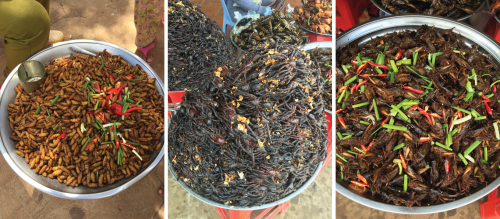
Something I also noticed at the pit-stop, and many of the shop fronts along the way, were BIG slabs of wood for sale. Later I was to find out the region is flush with freshly cut wood and LARGE furniture such as in our hotel and throughout the town of Stung Treng. I pitied the poor souls who were in charge of moving this stuff around. Every piece of furniture must have been so heavy. Upon arriving in Stung Treng in the evening, we were well accommodated and amply fed. Fish from the Mekong River featured heavily in almost every meal.
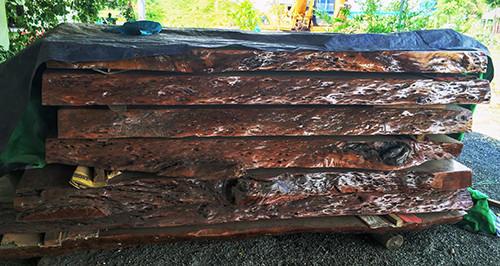
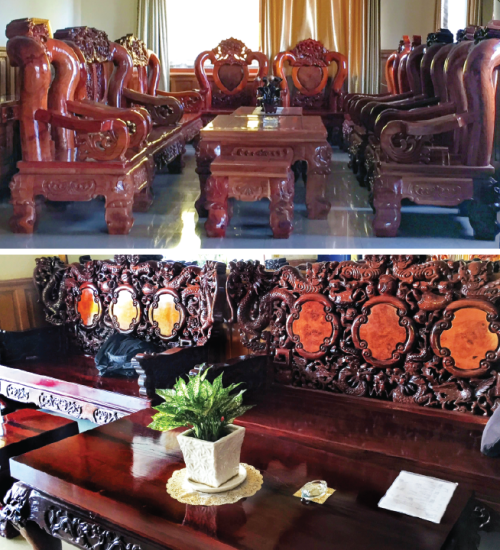
The next day we began our three-day training workshop in preparation for the real deal workshop that was to follow immediately after. Training was held at the largest and grandest building in town which was the government headquarters for the Stung Treng Province, of which Stung Treng is the capital. Despite it’s size, it was largely empty and used mainly for official functions. Nevertheless, it was a very cool place to work from each day.
Although most of the participants from the Ministry could speak some English, language was a problem, so Kimchhin stepped up as our translator and we were able to successfully work on the skills required to run a workshop on a report card for this region of the Mekong River, which feature important seasonally flooded forest ecosystems that are threatened by dam construction. Training involved everything from agenda design, public speaking, stakeholder engagement activities, PowerPoint training and systems modelling training.
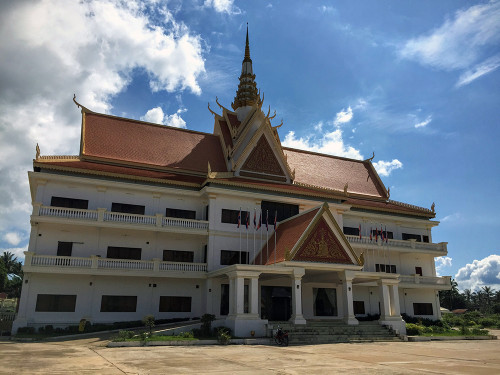
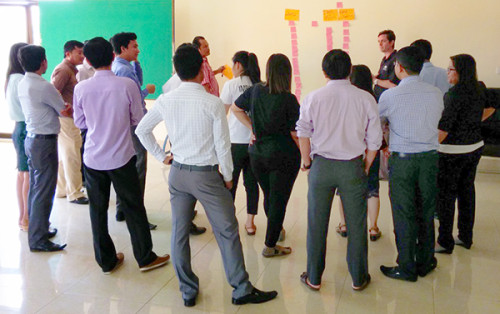
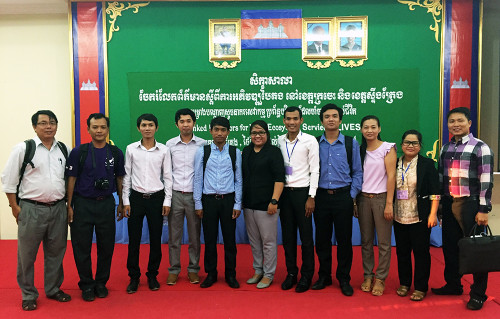
So the big day arrived and despite plenty of nerves, the MoE team successfully led the various stakeholders through the practiced activities and had plenty of engagement and input. I could tell everyone was not only relieved at the end, but had a sense of real pride in what they were able to accomplish. They were able to successfully walk away with a good sense of what the community valued about their reach of the Mekong River and what they feel is threatening these values, refinement of the how everything is connected through the systems dynamics model. An added bonus was that they now have the foundation to move forward on developing a report card for the region.
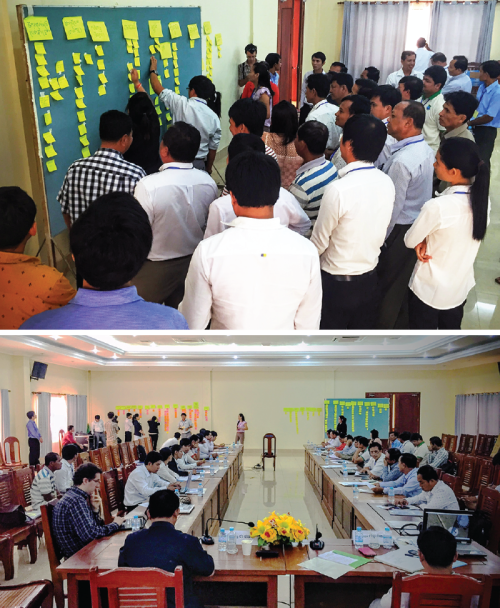
Before heading back to Phnom Penh we commandeered our bus for another road-trip up to Khone Phapheng Falls on the border with Laos, which are the largest in southeast Asia and the main reason that the Mekong River is not fully navigable into China. Then the bus commandeered us to push it through the mud.
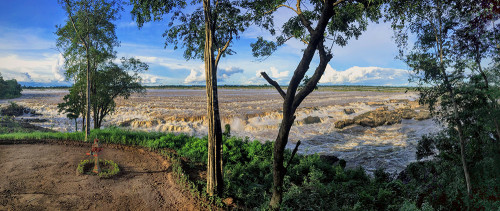
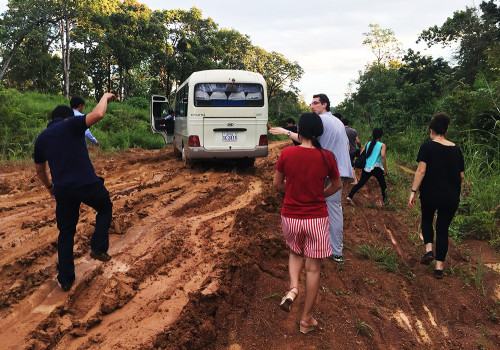
About the author
Simon Costanzo

Dr. Simon Costanzo is a Science Integrator at the University of Maryland Center for Environmental Science in Cambridge MD. Simon’s career in environmental science over the past 20 years has been focused on developing and improving methods for the assessment, monitoring and management of aquatic, marine and terrestrial ecosystems. Simon has extensive experience in scientific data collection, synthesis, interpretation and communication. Simon’s career has provided a unique insight to a wide range of disciplines and stakeholder groups including government, academia and private industry. Dr. Costanzo obtained his academic training from University of Queensland in Australia (PhD).

